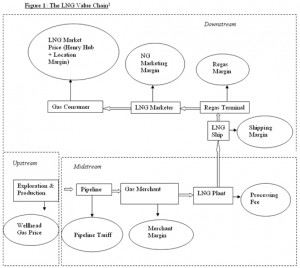Introduction
Liquefied natural gas (LNG) provides a relatively clean source of energy and is price-competitive with other fuels for distant markets. In recent years, LNG is has become a critical element in meeting the world’s burgeoning energy needs.
The Role of the Government in the LNG Industry
An LNG project is a major undertaking because of its capital intensive nature and can have a significant impact on the national economy. The initiatives of the Government of Trinidad and Tobago to optimise its position in the LNG industry are geared toward revenue maximisation, extraction of value along the LNG value chain, as well as securing market share. These goals are in fulfilment of the Strategic Plan for the Energy Sector.
The Government’s key position in the industry is defined through its role in:
- Resource ownership
- Design of the legal and fiscal system
- Approval and regulation of field development plans, project site, local content inputs and shareholding
- Developer of associated infrastructure such as ports, roads and housing for workers
- Potential investor in the project.
The Government’s direct take in the LNG Industry comes from:
- Royalty (Exploration & Production Licences)
- Share of production (Production Sharing Contracts)
- Dividend Payments (State company shareholdings)
- Petroleum Profits, Corporation, Income and Withholding Taxes
- Other Taxes and Levies
- Import/Export duties
Trinidad and Tobago entered the LNG business in 1999 when Atlantic LNG Train 1 was commissioned.
The LNG Value Chain: What is it?
The range of activities involved in the LNG business is collectively referred to as the LNG Value Chain (see Figure 1).
- The upstream segment of the Chain involves gas exploration and production (E&P).
- The midstream segment comprises transportation via pipeline from the gas production facilities to the LNG plant for liquefaction. The Gas Merchant purchases gas from the E&P Company, for supply to the plant. LNG produced is sent to storage tanks before being loaded onto LNG tankers for shipment to the marketplace.
- In the downstream segment, the LNG Marketer purchases the LNG, ships it to an import terminal which regasifies the LNG into Natural Gas before sending it into the pipeline networks where it is ultimately marketed to downstream customers.
